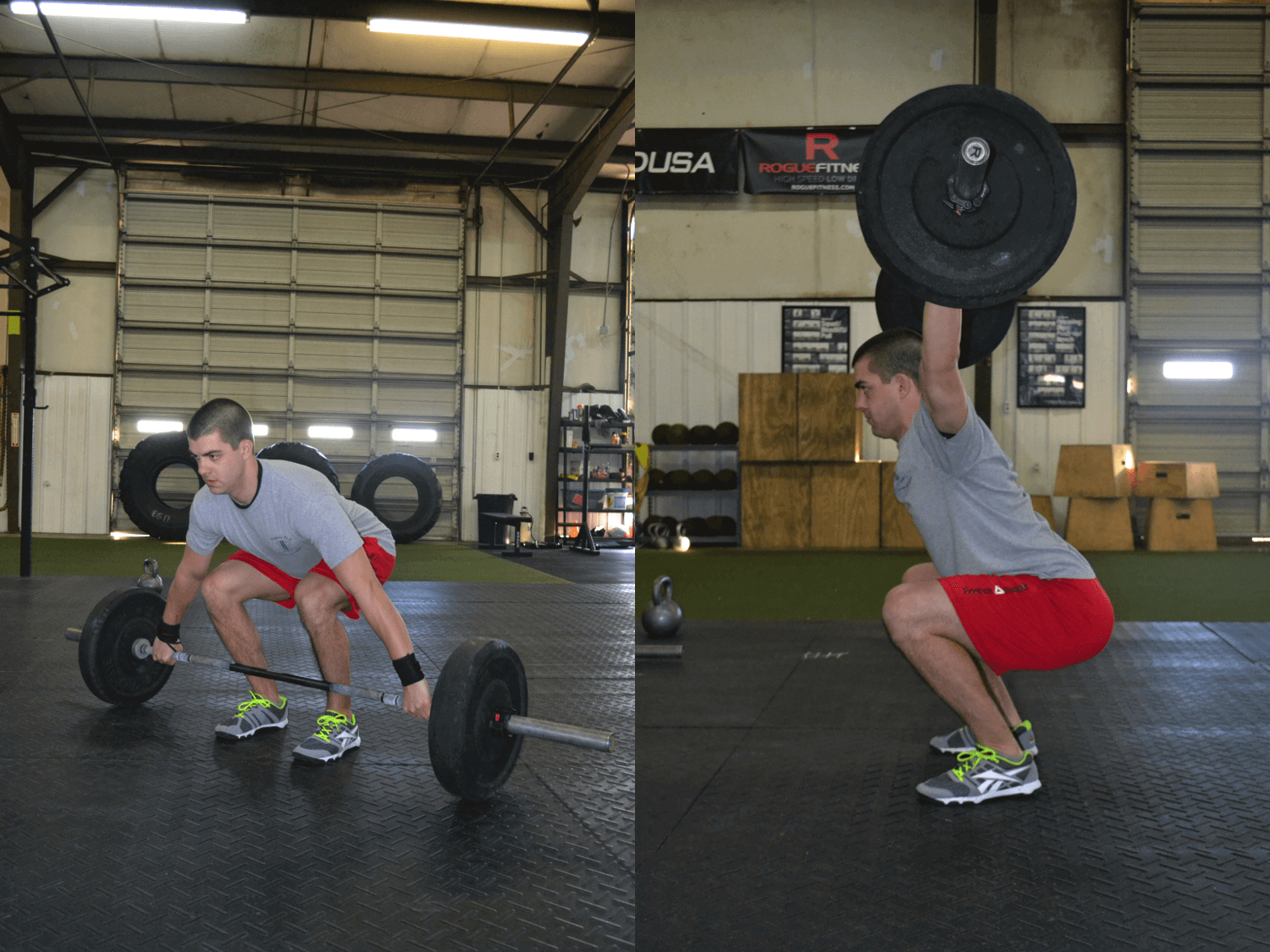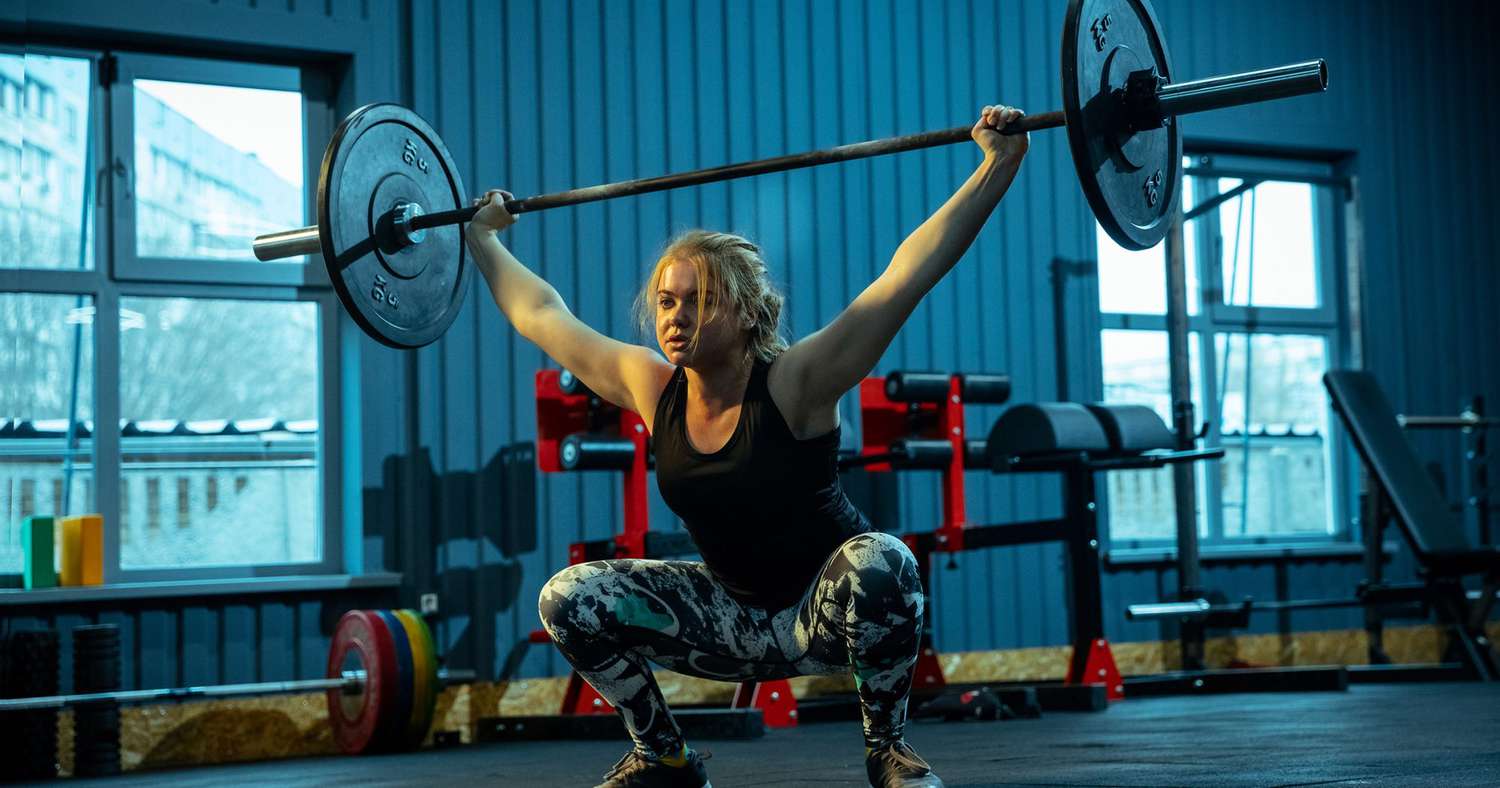The snatch is a dynamic and powerful Olympic weightlifting movement that targets multiple muscle groups simultaneously. This explosive exercise not only builds strength and power but also enhances athleticism and coordination. In this comprehensive guide, we will delve into the intricacies of the snatch, including its benefits, correct execution, variations, integration into training routines, safety tips, and complementary exercises.
The Snatch
The snatch is a staple exercise in Olympic weightlifting and is renowned for its ability to develop full-body strength, explosive power, and coordination. It involves lifting a barbell from the ground to overhead in one continuous motion, requiring a combination of strength, speed, and precision.
What Muscles Does The Snatch Target

The snatch primarily targets the following muscle groups:
1. Lower Body
- Quadriceps
- Hamstrings
- Glutes
- Calves
2. Upper Body
- Deltoids
- Trapezius
- Latissimus Dorsi
- Rhomboids
- Triceps
3. Core
- Abdominals
- Obliques
What Are the Outcomes
Performing snatches regularly can lead to several positive outcomes:
- Increased muscle mass and strength
- Improved explosiveness and power output
- Enhanced athletic performance and coordination
- Improved mobility and flexibility, particularly in the hips and shoulders
- Boosted metabolism and calorie expenditure due to the high-intensity nature of the exercise
How Do They Benefit Rugby Players
Rugby players can benefit greatly from incorporating snatches into their training routines due to the exercise’s ability to develop explosive power, strength, and agility. Some specific benefits for rugby players include:
- Improved tackling and sprinting abilities
- Increased ability to generate force in scrums and rucks
- Enhanced jumping ability for lineouts and kick receptions
- Injury prevention through improved strength and stability in key muscle groups
How to Perform the Exercise Correctly
Executing the snatch with proper form is essential to maximize its effectiveness and minimize the risk of injury. Follow these steps to perform the snatch correctly:
- Starting Position: Stand with your feet shoulder-width apart and grip the barbell slightly wider than shoulder-width with an overhand grip (palms facing down). Keep your chest up, shoulders back, and core engaged.
- First Pull: Begin the movement by driving through your legs and extending your hips and knees. Keep the barbell close to your body as you lift it off the ground.
- Second Pull: As the barbell passes your knees, explosively extend your hips, knees, and ankles to propel the barbell upwards. Keep your arms straight as the barbell rises.
- Catch: Once the barbell reaches its peak height, pull yourself under the barbell by quickly dropping into a squat position. Catch the barbell overhead with locked arms and a stable torso.
- Overhead Position: Stand up out of the squat with the barbell overhead, maintaining a straight back and active shoulders.
- Finish: Complete the lift by standing fully upright with the barbell overhead. Pause briefly before lowering the barbell back to the starting position with control.
Variations of the Exercise
While the traditional snatch is performed with a barbell, there are several variations that can add variety to your training routine:
- Dumbbell Snatch: Perform the snatch using dumbbells instead of a barbell to challenge stability and coordination.
- Kettlebell Snatch: Similar to the dumbbell snatch but performed with a kettlebell, providing a different grip and balance challenge.
- Hang Snatch: Start the lift from a standing position with the barbell at mid-thigh level, omitting the initial pull from the ground.
- Muscle Snatch: Perform the snatch without dropping into a squat, emphasizing upper body strength and explosiveness.

Integrating The Exercise into Your Routine
To incorporate snatches into your training routine effectively, consider the following tips:
- Start with lighter weights and focus on mastering technique before progressing to heavier loads.
- Include snatches in your workouts 2-3 times per week, alternating between higher volume and lower volume sessions.
- Pair snatches with complementary exercises such as squats, deadlifts, and overhead presses to create a well-rounded strength training program.
- Consider working with a qualified coach or trainer to receive personalized instruction and feedback on your snatch technique.
Safety Tips and Common Mistakes
To perform snatches safely and effectively, keep the following safety tips in mind:
- Warm up properly before attempting heavy snatches to prepare your muscles and joints for the demands of the exercise.
- Focus on maintaining proper form throughout the lift, particularly keeping the barbell close to your body and engaging your core muscles.
- Avoid hyperextending your lower back or locking out your elbows at the top of the lift, as this can lead to strain or injury.
- If you experience any pain or discomfort while performing snatches, stop immediately and seek guidance from a qualified fitness professional.
Common mistakes to watch out for when performing snatches include:
- Allowing the barbell to drift away from your body during the lift, which can compromise technique and lead to inefficiency.
- Failing to fully extend your hips and knees during the second pull, resulting in a lack of power and height in the lift.
- Dropping into the squat position too early or too late, making it difficult to catch the barbell overhead in a stable position.
Complementary Exercises
In addition to snatches, incorporating the following exercises into your training routine can help improve your overall strength, power, and athleticism:
- Clean and Jerk: Another Olympic weightlifting movement that targets similar muscle groups and develops explosive power.
- Deadlift: Strengthens the posterior chain and teaches proper hip hinge mechanics, which are essential for the snatch.
- Overhead Squat: Improves mobility and stability in the shoulders and hips while reinforcing proper squat mechanics.
Alternative Exercises
If you’re unable to perform snatches due to injury, mobility restrictions, or other reasons, consider incorporating the following alternative exercises into your training routine:
- Power Clean: Similar to the snatch but involves catching the barbell in a front rack position instead of overhead.
- Medicine Ball Throws: Develop explosive power and athleticism by performing overhead or chest passes with a medicine ball.
- Box Jumps: Enhance lower body explosiveness and coordination by jumping onto a box from a standing position.
The Snatch
In conclusion, the snatch is a highly effective exercise for developing full-body strength, power, and athleticism. By mastering proper technique, incorporating variations into your routine, and complementing snatches with other strength-building exercises, you can take your training to the next level and achieve your fitness goals. Remember to prioritize safety and listen to your body to ensure long-term success and injury prevention.

